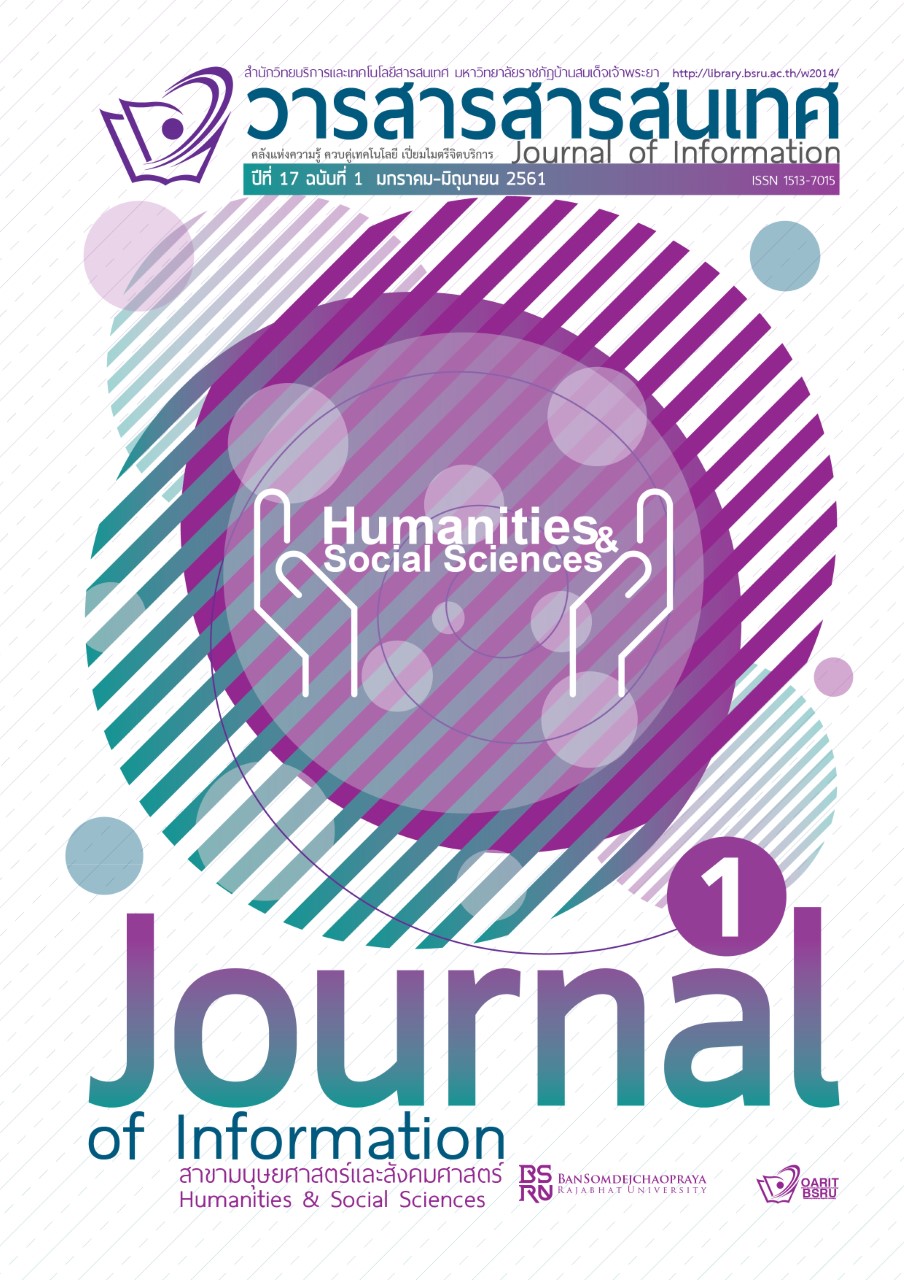Toob Keng : Ritual Music and Social Dynamics in Ban Pa Daeng, Pa Lao Sub District, Maung Phetchabun District, Phetchabun Province
Keywords:
Toob-Keng, Rituals music, Social DynamicsAbstract
Abstract
This research studied the role of Toob Keng folk band on the rituals and social dynamics in the present days which affects the existence and change of the band in Ban Pa Daeng community, Pa Lao Sub District, Muang Phetchabun District, Phetchabun Province, Thailand. It is found that the band is a cultural product of Ban Pa Daeng community. The band’s music is unique and its role was specified towards the community in various dimensions. The community’s history and beliefs towards Toob Keng, the music patterns, as well as each song contain meanings and significance which has been centering round the rituals and lifestyle of Ban Pa Daeng community for a long time. Today social changes and technological advancement play a key role in the lifestyle of the community, forcing them to change accordingly. Consequently, such changes affect the existence of Toob Keng in the future.
The results of the development towards modernity have pushed Ban Pa Daeng community forward to accommodating the way of life of the city people who charish materialism. Working and living like the city people drive Ban Pa Daeng residents becoming estranged from the community’s rituals and local activities, resulting in the implicitly neglect of social learning processes, lifestyle transformation, and longstanding cultural heritage. The quality time between Toob Keng and Ban Pa Daeng community has been faded; so as between young generations learning their ancestors’ wisdom. As a result, the new generations who have been raised among the current of advancement are neither familiar nor bonded with the local rituals and Toob Keng. Even though at the present some of the younger generations are interested in Toob Keng, the ratio is rather small. Although the remaining members of Toob Keng are strict to their duty despite the development that causes a change in their lifestyle, they are considered a minority, comparing to the whole society. Therefore, it is not possible for them to resist the sharp and continuous changes of a materialistic current. Now, the government, educational institutions, and the community’s people have realized the value and significance of Toob Keng as the local musical arts and cultures even more; Toob Keng has been supported by these sectors. However, such consolation is not given continuously and not taken seriously enough to create a sustainable succession process but only focuses on a few existing Toob Keng bands. The important process which can cause the ongoing existence of Toob Keng from generations to generations still lacks.
In order to maintain Toob Keng, serious work on continuous support and education must be acknowledged and realized. Every person in Ban Pa Daeng community should be aware of the significance of Toob Keng as a priceless and unique cultural heritage and an exceptional local culture. If the approach for conservation and sustainable development still has not yet been promoted as a genuine lifelong learning, Toob Keng may be permanently disappeared from the Ban Pa Daeng community in the near future.
Downloads
Published
How to Cite
Issue
Section
License
บทความ ข้อความ ภาพประกอบ และตารางประกอบที่ลงพิมพ์ในวารสารเป็นความคิดเห็นส่วนตัวของผู้นิพนธ์ กองบรรณาธิการไม่จำเป็นต้องเห็นตามเสมอไป และไม่มีส่วนรับผิดชอบใดๆ ถือเป็นความรับผิดชอบของผู้นิพนธ์เพียงผู้เดียว






